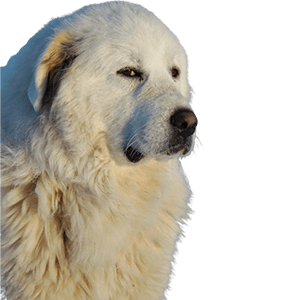Great Pyrenees

”
The Great Pyrenees is a completely antique breed that possibly descended from the primary flock of mum or dad puppies, huge white puppies that existed in Asia Minor approximately 10,000 b.c. When nomadic shepherds added their sheep to the Pyrenees Mountains around 3000 b.c, their flock guarding puppies got here, forming the idea of the Great Pyrenees breed. These puppies excelled as farm animals’ guardians for numerous centuries. In medieval France, the Pyrenees have become a powerful castle guard, and bands of those implementing puppies have become the satisfaction of many huge chateaus. In the past due 1600s, the breed stuck the attention of the French nobility. For a quick time, they have been in superb call for withinside the courtroom docket of Louis XIV. In fact, in 1675, the Great Pyrenees became decreed the “”Royal Dog of France”” by Louis XIV. Around the same time, the Great Pyrenees got here to Newfoundland, where they’ll have performed a position withinside the improvement of the Newfoundland breed. The first documented Pyrenees got here to America with General Lafayette in 1824. By the 1900s, the breed had disappeared from French courtroom docket life, and the last puppies have been the ones located nonetheless, running withinside the remoted countryside. Puppies have been bought for vacationers who added them lower back to England and different countries. However, these puppies bore little resemblance to the astonishing Pyrenees that had as soon as been so admired. Interest withinside the breed declined in England. Fortunately, the breed nonetheless existed in enough numbers and best in its local mountain land that later fanciers have been capable of gaining the right breeding stock. These puppies served as the inspiration for the current Pyrenees. Serious importation of the breed to America came about withinside the 1930s, and through 1933 the Great Pyrenees acquired AKC recognition. The breed attracted great interest in addition to new owners, and nowadays, the Great Pyrenees enjoys mild recognition as their circle of relatives’ pets. The breed has earned popularity additionally as a dependable farm animals mum or dad in provider in tons of the United States.”
- Type - Working
- Weight -85-115 lb
- Height- 25-32"
- Family -Livestock dog, Flockguard
- Date of Orgin-Ancient times
- Area of Orgin -France
- Other Names -Pyrenean Mountain Dog, Chien des Pyrenees, Chien de Montagne des Pyrenees
Energy Level
Exercise Requirements
Playfulness
Affection Level
Friendliness To Dogs
Friendliness To Other Pets
Friendliness To Strangers
Watchfulness
Ease of Training
Grooming Requirements
Heat Sensitivity
Vocality
Temperement
The Great Pyrenees training is a successful and enforcing father or mother. This breed is dedicated to its circle of relatives and cautious of strangers—human or canine. The breed is calm, well-mannered, and serious when no longer provoked. While very mild with their circle of relatives and children, the Great Pyrenees puppy training have an independent, stubborn nature. Because they’re wanderers, they need to be stored on a leash. The Great Pyrenees is a herbal barker as a father or mother dog.
Upkeep
The Great Pyrenees requires daily exercise to stay in shape, and a moderate walk will usually suffice. This breed enjoys hiking, especially in cold weather and snow, but does not do well in hot weather. This dog’s coat will require daily brushing once or twice weekly when shedding. Some dogs of this breed may drool at times and can tend to be messy drinkers.
Health
Major Health issues: CHD, patellar luxation Minor Health issues: entropion, OCD, skin problems, osteosarcoma, cataract, chondrodysplasia (dwarfism), panosteitis Occasionally seen: gastric torsion, otitis externa, spinal muscular atrophy Suggested tests: hip, knee, (eye) Life span: 10–12 years
Disclaimer
Note: While the characteristics mentioned here may frequently represent this breed, dogs are individuals whose personalities and appearances will vary. Please consult the adoption organization for details on a specific pet.
